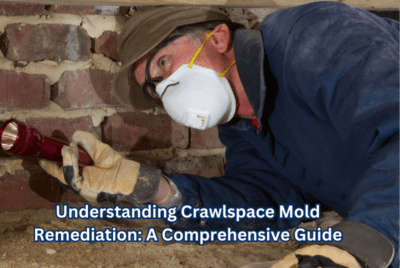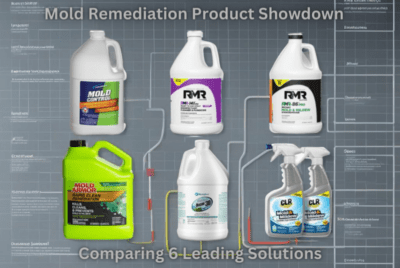Comprehensive Guide to Black Mold on Windows: Causes, Treatment, and Prevention
Have you ever had that dreadful feeling when you discover black spots shadowing the corners of your window sills? That, my friend, is the notorious black mold. It’s not just a minor inconvenience; it poses real threats to your health and the beauty of your home. So, let’s uncover the mystery surrounding black mold on windows—its causes, remedies, and prevention methods.
What Causes Black Mold on Windows?
The fundamental cause of mold growth is moisture. Combine it with organic material and limited airflow, and you’ve got the perfect cocktail for mold proliferation. But why windows? They’re often the primary culprits because of their constant exposure to external temperature changes, leading to condensation. It’s akin to leaving a damp towel in a bag on a sunny day; given time, things get nasty.
Why is Black Mold on Windows Bad for Health?
Black mold on windows isn’t just a cosmetic issue; it’s a silent invader attacking your health. Breathing in mold spores can lead to allergy-like symptoms such as sneezing, itchy eyes, and even respiratory issues. Picture it as an uninvited guest at your dinner party, causing chaos and discomfort.
Factors to Consider Before Cleaning Mold
Imagine walking into a battle unprepared. That’s what cleaning mold without proper knowledge feels like. So, before you go all-in against the mold, here are some guidelines.
Safety Precautions
Mold removal isn’t child’s play. Mold spores, when disturbed, can easily disperse into the air. Hence, equipping yourself with gloves, a mask, and ensuring good ventilation is crucial. It’s the shield and armor in your battle against mold.
Types of Cleaning Products
While there are countless products in the market, it’s essential to choose the one that aligns with the severity of the mold and the affected material. Sometimes, a DIY solution does the trick, but other times, you might need a stronger commercial product.
Examining the Area
It’s vital to assess the mold situation. If it’s a vast expanse or if it’s affecting porous materials like wooden frames, a more thorough method might be required. Think of it as diagnosing the problem before selecting the treatment.
Methods for Removing Black Mold from Windows
Alright, let’s dive into the meaty part. Here’s a detailed exploration of different methods and when to use them.
1. Vinegar: The Unsung Hero in Your Pantry
 Ah, vinegar. Who knew that the same stuff you use in your salad dressing could double as a mold-killing superhero? Trust me, this humble pantry staple is way more than just a cooking ingredient. You see, vinegar is packed with acetic acid, a natural enemy to mold. It’s like the Superman to mold’s Lex Luthor.
Ah, vinegar. Who knew that the same stuff you use in your salad dressing could double as a mold-killing superhero? Trust me, this humble pantry staple is way more than just a cooking ingredient. You see, vinegar is packed with acetic acid, a natural enemy to mold. It’s like the Superman to mold’s Lex Luthor.
So, how do you turn vinegar into your own mold-fighting sidekick? Easy peasy. Grab a spray bottle, fill it up with vinegar—no need to water it down—and give that moldy spot a good spritz. Let it hang out for a few hours. Consider it vinegar’s “thinking time” to strategize how to defeat its arch-nemesis, mold. After it’s done plotting, grab a brush and scrub away. Got a stubborn mold situation? Just repeat the action until it surrenders!
2. Tea Tree Oil: Not Just for Fancy Spa Days
Raise your hand if you thought tea tree oil was only good for those self-care Sundays and aromatherapy sessions. Well, think again! This essential oil is like a ninja with antifungal kicks and punches. Seriously, tea tree oil is a beast when it comes to killing mold.
Ready to give it a try? Mix two teaspoons of this powerful oil with two cups of water, shake it up in a spray bottle, and go to town on those moldy spots. Let it sit, marinate, and do its ninja moves for a few hours. Then, just wipe it away. Yes, it’s that simple.
3. Hydrogen Peroxide: More Than Just a Blonde Moment
Okay, we’ve all used hydrogen peroxide to lighten our hair or clean a cut, right? But did you know it’s also an all-star in the mold-killing game? It’s like the Swiss Army knife of household items; versatile and super effective.
To get it in on the action, take your standard 3% hydrogen peroxide and pour it into a spray bottle. Aim, shoot, and let it sit for about 10 minutes. Imagine it as a time-out for the mold, where it contemplates all its bad life choices before you scrub it away for good.
4. Baking Soda: The Jack-of-All-Trades
Who doesn’t have a box of baking soda lying around? It’s the jack-of-all-trades in your kitchen. Sure, it keeps your fridge smelling fresh and helps your cookies rise, but did you know it’s also like a bodyguard for your home, keeping mold away? Yep, baking soda is pretty much your home’s security detail against mold.
So, ready to put baking soda on the job? Whip up a paste by mixing it with a bit of water. Slather it onto the moldy area like you’re icing a cake. Then scrub, scrub, scrub. Once you rinse it off, you’ll realize you’ve just witnessed a magic trick—poof, the mold is gone! Plus, this mighty powder has the courtesy to prevent it from coming back. How awesome is that?
5. Detergent: Not Just for Laundry Day
You might think detergents are just for dirty dishes or stained shirts, but surprise—detergent is like the emergency responder for mold on non-porous surfaces. It swoops in, scrub-a-dub-dubs the mold away, and leaves everything looking spic and span.
Here’s the lowdown: Take your trusty detergent, dilute it with water if you want, and then go to town scrubbing those moldy spots. Think of it as giving your surface a spa day, except with a lot of elbow grease. Just make sure to rinse it off really well. You wouldn’t want any soap scum inviting the mold back for a reunion, would you?
So, which one of these household champions are you going to enlist in your mold-busting army? Trust me, you can’t go wrong with any of them!
Wooden Windows vs. uPVC in the Battle Against Mold
The age-old debate: wood or uPVC? While wood has aesthetic appeal, uPVC boasts of its resistance to mold. Understanding the pros and cons can guide your choice.
Managing Condensation and Moisture in the Home
Remember, mold thrives in moisture. Reducing moisture isn’t just about tackling mold; it’s about holistic home health.
Four Ways to Manage Condensation
- Dehumidifiers: These are lifesavers in damp environments, helping maintain optimal humidity levels.
- Indoor Plants: While they’re lovely, some can contribute to indoor moisture. Choosing plants wisely or reducing their number can help.
- Exhaust Fans: Especially crucial in bathrooms and kitchens where humidity levels can soar.
- Ventilation: Regularly airing out your home can significantly reduce moisture accumulation.
Keeping Your Home Environment Moisture-Free
Regular checks, ensuring no water leakage, using moisture absorbers, and maintaining optimal room temperature are just a few ways to keep your home moisture-free. A mold-free home is a happy home!
How to Prevent Future Mold Build-up on Windows
After all the hard work of cleaning, the last thing you want is a mold comeback. Regular checks, using mold-resistant paints, and ensuring window frame integrity can make a world of difference.
Should You Tackle Mold Removal Yourself?
If the affected area is small, with the right precautions, you can tackle it. However, for extensive mold, especially the potentially toxic black mold, consider professional help. It’s like choosing between a home remedy and a doctor’s visit—each has its place.
FAQ About Black Mold Around Windows
- Are Wooden Windows More at Risk Than uPVC?
Yes, due to wood’s porous nature. But with proper care, they can stand their ground. - Can Vinegar Be Used for Mold Removal?
Definitely! It’s eco-friendly and often effective. - Why is Mold Worst Around Windows?
Condensation, my friend. Windows are prime spots for it.
Understanding Mold Toxicity and Health Risks
While all molds can cause health issues, some are downright toxic. It’s essential to identify the type and act accordingly. As the saying goes, “Knowledge is power.”
When is the Right Time to Seek Professional Help?
If you find yourself losing the battle against mold, or if the mold covers a large area, it might be time to call in the cavalry—professional mold removal services. Think of it like calling a specialist when an illness gets out of hand. They’ll assess the situation, use specialized equipment, and give you advice on preventing future occurrences.
Does Leaving Windows Open Cause Mold?
This might sound counterintuitive, but yes, leaving your windows open too often can sometimes contribute to mold growth. While it’s good to let in fresh air, doing so during humid days can introduce additional moisture into your home. It’s like inviting the enemy into your fortress! So, ensure you open windows during dry, sunny days to promote air circulation without adding to indoor humidity.
Impact of Seasonal Changes on Mold Growth
As seasons change, so do the conditions for mold growth. For example, winter brings about a high likelihood of condensation, especially near windows. Summer, on the other hand, can lead to increased humidity. It’s a year-round battle, and staying vigilant each season is like changing your battle strategy according to the situation. Awareness of seasonal changes can help you take preventative measures ahead of time.
Spring Cleaning to Prevent Mold
Spring is usually the time when many engage in deep cleaning. It’s the perfect opportunity to tackle those mold-prone areas, especially windows. Consider it as a seasonal reboot for your home’s health.
Humidity Levels in Autumn
As leaves fall and temperatures drop, your home’s internal conditions may also change. Monitoring indoor humidity levels during autumn can prevent a mold crisis before winter hits.
Tips and Tricks for Mold Prevention
Over the years, homeowners have developed nifty tricks to keep mold at bay. Let’s dive into some lesser-known but effective ways to maintain a mold-free home.
Use of Silica Gel
Those small packets of silica gel that come with new shoes or electronic gadgets? They absorb moisture! Placing them near windows can act as a mini-dehumidifier, giving mold less chance to grow. It’s like using a sponge to soak up all the water that could otherwise contribute to a leak.
Regular Inspection and Maintenance
Performing regular inspections of your window sills, especially after storms or changes in weather, can nip a potential problem in the bud. Think of it as routine health checks but for your home.
The Psychological Impact of Living in a Moldy Home
Mold isn’t just a physical health threat; it also affects your mental well-being. Living in a home infested with mold can induce stress and anxiety, creating a vicious cycle that makes the problem even worse. Picture it as an invisible cloud of gloom hanging over your living space. Being proactive about mold removal can lift that cloud, bringing peace and tranquility back into your home.
Conclusion
In our journey through the world of black mold, we’ve armed you with knowledge and solutions. With proper care and vigilance, those black spots won’t stand a chance. Ready to take back your home?
For more information on the health risks associated with mold exposure, you can refer to this in-depth study by the Centers for Disease Control and Prevention (CDC).
If you’re interested in understanding the ideal conditions for mold growth, this article from the National Institutes of Health (NIH) offers a scientific perspective.




